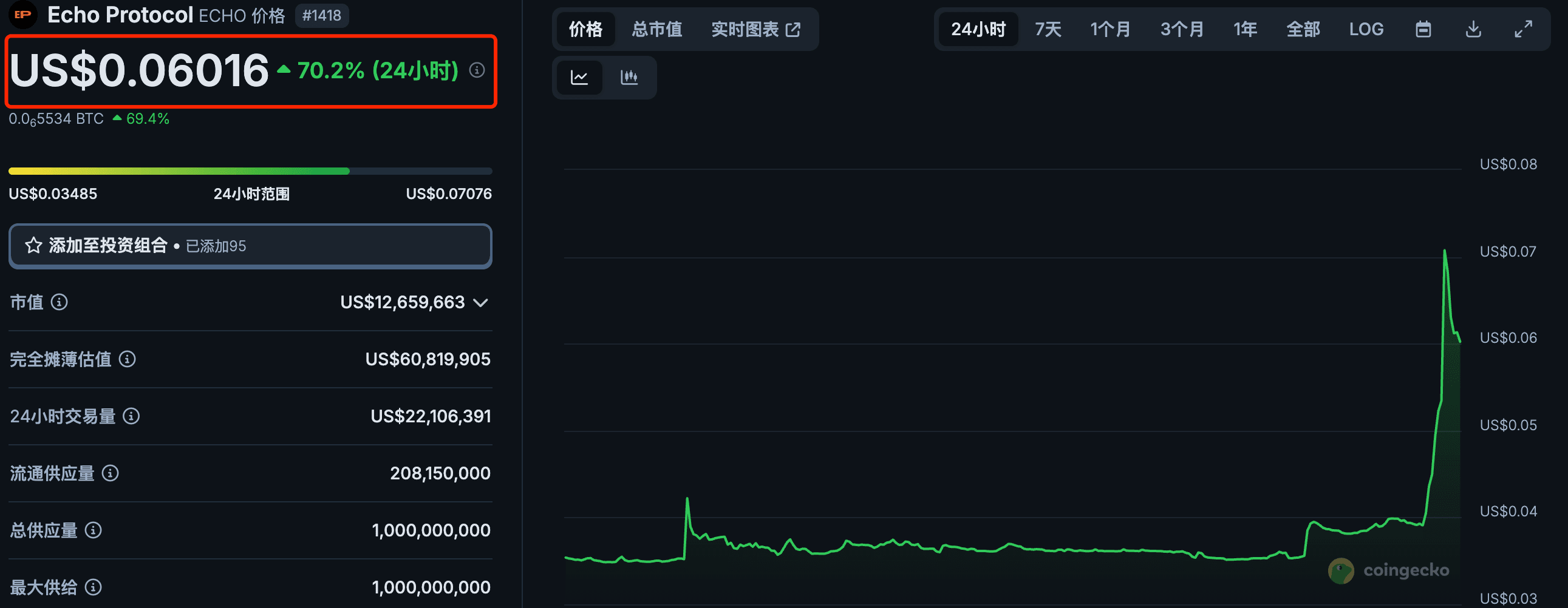To be honest, $ECHO is the project I have been paying the most attention to in the #Aptos ecosystem recently. Why? Because it has already shown typical 'strong market control characteristics', with not only the project team controlling the market but also a complete economic model, funding logic, and track positioning, all aligned.
Looking back at the historical trend, after $Echo went on Binance Alpha, an earlier wave of airdrop sell-offs drove the price down to $0.016. At this time, many people were actually washed out of the market.
But smart people know that once it can withstand the pressure from airdrop sell-offs and survives, it is not a trash project.
Then, $Echo began to oscillate around $0.02 for a while, the trading volume returned, and the price started to form a converging upward structure. On July 6, this coin finally broke through the bottom box, climbing all the way to $0.05, doubling in 24 hours, with trading volume soaring to 12 million dollars. A typical trend of strong market control + consensus resonance.

🧐Why can $Echo show such a trend?
It is clear that the project team has figured out how to play the current narrative of #BTCfi:
Stronger coin price + binding ve model (lock-up mechanism) = flywheel activation
$Echo's ve model is designed very cleverly; locking up not only earns returns but also grants the right to capture 'real business cash flow'. Simply put, the $Echo you lock up is not just for passive holding; you are 'investing in the actual profits of the project' — including transaction fees, lending interest, cross-chain profit sharing, etc.
This resembles a combination of 'share dividends' + 'voting rights' + 'economic benefits', a trinity.
As long as the coin price can rise, more people will want to lock up; the more locked up, the less circulation, and the more stable the coin price; the more stable the coin price, the stronger the willingness to lock up — this is a typical positive ve flywheel, my favorite structural opportunity.
🧮 Valuation comparison shows a shocking gap
Let's take a look at the current on-chain data for $Echo:
•✅ TVL exceeds $600M
•✅ Monopoly 70% of BTC liquidity on Aptos
•❗FDV is only $40M
•👉 FDV / TVL ratio: 0.067 (extremely low)
Compared to other projects in the same #BTCfi track.
#BounceBit TVL 385M, FDV 167M, FDV/TVL=0.43
#Bedrock TVL 500M, FDV 128M, FDV/TVL=0.256
Without comparison, there is no harm; simply put, $Echo has packed a giant business into a mini coin price shell. The market hasn't reacted yet (not priced in), but once funds discover this valuation gap, a correction is inevitable.
$Echo is a typical 'low valuation + high TVL + ve model + strong market control' project. In the long run, as long as the ve model continues to operate, the binding logic between coin price and TVL becomes stronger, then these 'projects with real cash flow capture ability' are the 'crypto version of small REITs (income-generating assets)' in the crypto space, worthy of attention.





